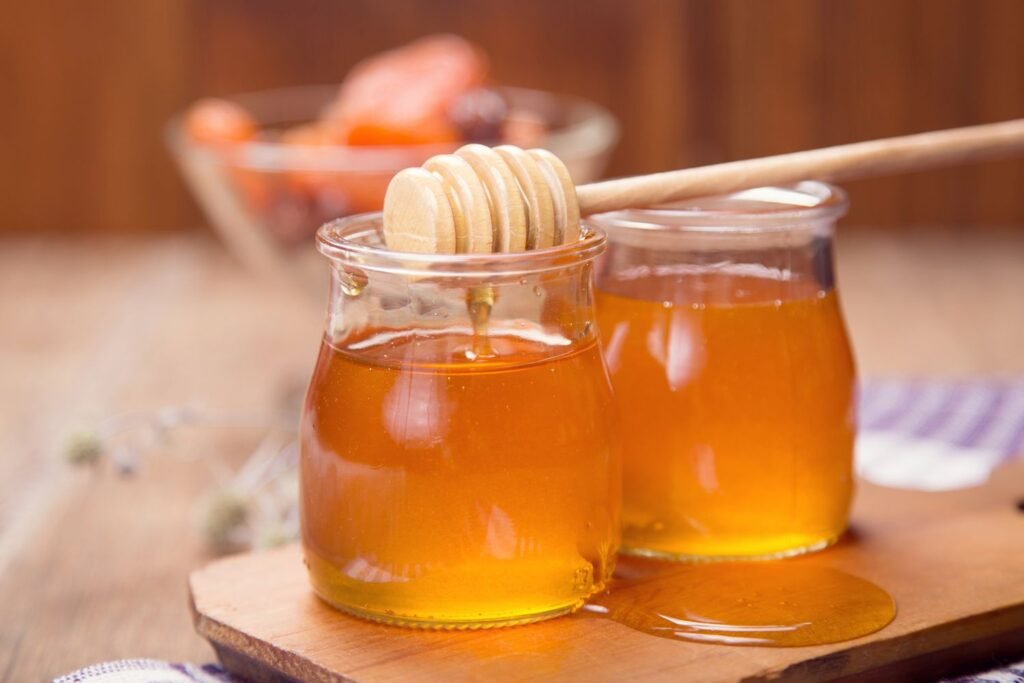How to Decrystallize Honey With Hot Water?
I’ll never forget the first time I reached for honey only to find it had turned into a solid, grainy mass. After years of beekeeping and working with artisanal honey producers, I’ve learned that crystallization is actually a sign of quality honey – it just needs proper gentle warming to return to its liquid state. This simple water bath method to decrystallize honey with hot water preserves honey’s delicate flavors while restoring its pourable consistency.
Why Honey Crystallizes and How Warming Helps
Understanding the natural process of honey crystallization:
- Natural crystallization: Sign of pure, unpasteurized honey
- Glucose separation: Glucose molecules form stable crystals
- Temperature sensitivity: Heat breaks crystal bonds gently
- Flavor preservation: Low-temperature warming protects delicate aromas
- Quality indication: Crystallization shows honey hasn’t been overheated
Key Honey Science Terms
- Glucose crystals: Natural sugar formations that cause hardening
- Fructose solution: Liquid portion that remains uncrystallized
- Pasteurization: Heat treatment that prevents crystallization
- Enzyme preservation: Heat-sensitive proteins in raw honey
- Hyroscopic nature: Honey’s ability to absorb moisture
Step-by-Step Hot Water Decrystallization Method
Preparation and Equipment
- Choose appropriate container: Glass jar or plastic container (no metal)
- Select water temperature: 104-113°F (40-45°C) ideal
- Gather tools: Thermometer, large bowl, and stirring utensil
- Work environment: Stable heat-safe surface near water source
The Warming Process
- Remove lid: Always remove metal lids and seals before warming
- Water bath preparation: Fill bowl with hot tap water (not boiling)
- Temperature check: Use thermometer to ensure proper temperature
- Submerge partially: Place honey container in water bath
- Stir occasionally: Gently stir every 15 minutes
- Monitor progress: Check consistency every 30 minutes
- Water refresh: Replace cooled water with fresh warm water
- Dry thoroughly: Wipe container before replacing lid
Pro Tip: Add 1-2 inches of water to slow cooling and maintain consistent temperature
Honey Type Crystallization Guide
| Honey Type | Crystallization Speed | Decrystallization Time | Special Considerations |
|---|---|---|---|
| Clover | Fast | 1-2 hours | Fine crystals |
| Wildflower | Medium | 2-3 hours | Variable crystal size |
| Manuka | Slow | 3-4 hours | Thick texture |
| Acacia | Very Slow | 1 hour | Rarely crystallizes |
| Orange Blossom | Medium | 2 hours | Delicate flavor |
The Science Behind Honey Crystallization
Understanding the physical chemistry:
- Supersaturation: Honey is supersaturated sugar solution
- Seed crystals: Glucose molecules form crystallization nuclei
- Temperature dependence: Cold accelerates, heat reverses crystallization
- Crystal growth: Gradual formation of stable crystal matrix
- Reversible process: Heating returns honey to liquid state
Advanced Techniques
For large quantities or stubborn honey:
- Double boiler method: More precise temperature control
- Dehydrator warming: Low, consistent heat for large containers
- Radiator warming: Slow overnight warming in winter
- Sunlight method: Natural warming on sunny windowsill
Troubleshooting Common Issues
Problem: Honey not liquefying
Solution: Increase temperature slightly and be patient
Problem: Water getting into honey
Solution: Ensure container is sealed or water level lower
Problem: Overheating and flavor loss
Solution: Use thermometer and never exceed 45°C (113°F)
Problem: Separation after warming
Solution: Stir thoroughly to reincorporate layers
Storage Tips to Prevent Crystallization
- Room temperature: Store between 70-80°F (21-27°C)
- Dark location: Protect from light exposure
- Tight sealing: Prevent moisture absorption
- Consistent temperature: Avoid temperature fluctuations
FAQs
Q. Is crystallized honey still good to eat?
A. Absolutely – crystallization is natural and doesn’t affect safety or nutrition, only texture.
Q. Why shouldn’t I microwave honey?
A. Microwaves create hot spots that can overhear and destroy delicate enzymes and flavors.
Q. How long does decrystallized honey stay liquid?
A. It will gradually recrystallize, typically within 2-4 weeks depending on honey type.
Q. Can I decrystallize honey multiple times?
A. Yes, but repeated heating may gradually affect flavor and enzyme content.
Q. Why does some honey never crystallize?
A. High fructose content or commercial processing (pasteurization and filtering) prevents crystallization.
Historical Context
Honey preservation methods:
- Ancient techniques: Storage in cool caves and cellars
- Traditional knowledge: Passed-down methods for handling honey
- Modern science: Understanding of crystallization chemistry
- Artisanal revival: Return to natural honey handling
Alternative Methods
When hot water isn’t available:
- Car dashboard: Summer sun provides perfect warming
- Pilot light warming: Near oven pilot light overnight
- Hot cupboard: Above refrigerator or water heater
- Body heat: Pocket warming for small amounts
Safety Considerations
- Temperature control: Never exceed 113°F (45°C)
- Container safety: Use heat-safe glass or plastic
- Burn prevention: Handle warm containers carefully
- Water safety: Avoid electrical appliances near water
Final Thoughts
Decrystallize honey with hot water is a simple process that preserves the quality and flavor of your honey while restoring its useful liquid state. I’ve used this method for everything from personal kitchen use to commercial honey processing, and the gentle water bath approach consistently delivers the best results. Remember that crystallization is natural and reversible – it’s not a sign of spoilage but rather of quality honey.
The key is patience and proper temperature control. With this method, you’ll always have perfectly liquid honey ready for use.

